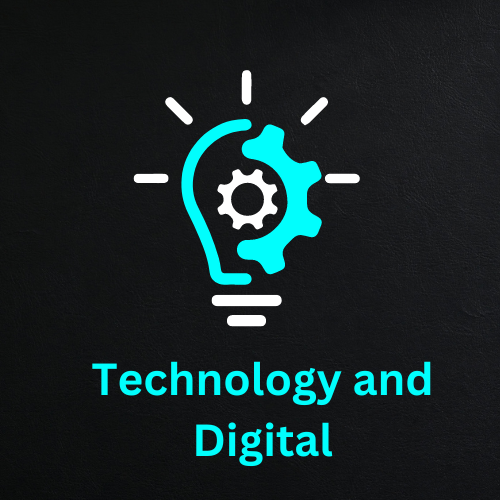Agentic AI in IT: What It Means for the Future of Work

Artificial intelligence continues evolving rapidly. A recent shift gaining traction is agentic AI — autonomous systems that are not just reactive, but proactive, capable of planning and executing tasks with minimal human guidance. For IT professionals, embracing agentic AI is no longer optional; it’s becoming a foundational shift in how systems are designed, managed, and scaled.
This article explores what agentic AI really is, how it is reshaping IT landscapes, what challenges lie ahead, and practical ways to begin adopting it in a responsible, strategic manner.
What Is Agentic AI — Beyond Traditional Automation
Traditional automation is rule-based: “If X happens, do Y.” Generative AI is more flexible — “What is X? How should Y respond?” Agentic AI combines these with autonomy: the ability to sense, plan, decide, and act toward goals over multiple steps. In other words, it becomes a “virtual coworker” rather than a tool.
Key Capabilities of Agentic AI
- Memory & Context Awareness: Retains state over time, making decisions based on past actions.
- Task Composition: Decomposes complex tasks into sub‑tasks and determines sequence.
- Tool Use: Interfaces with APIs, scripts, or external systems autonomously.
- Self‑Monitoring: Detects failures, retries, or adjusts its path when encountering errors.
Practical Tip:
Begin with noncritical workflows—such as data gathering, report generation, or log scanning—and layer in agentic capabilities gradually. Use sandbox environments to test how the agent behaves before deployment in production systems.
How Agentic AI Is Reshaping IT Operations
IT is ground zero for agentic AI adoption, because many tasks are predictable, rule-based, and repetitive. As agentic systems mature, they begin to take on roles once reserved for human operators.
Use Case: Automated Incident Triage
Suppose a server goes down and triggers multiple alerts. An agentic AI monitors logs, correlates with metrics, narrows possible root causes, then either restarts services, escalates tickets, or rolls back recent changes automatically. This kind of “first responder” capability shrinks resolution times and frees human engineers for deeper work.
Use Case: DevOps & Deployment Management
An agentic system could act as a deployment manager: evaluating readiness, executing rollback paths if errors arise, scheduling updates, and even optimizing resource usage (e.g. scaling up/down VMs, caching, load balancing) without human intervention.
Use Case: Security Response
Agentic AI can monitor network traffic, detect anomalies, isolate suspicious nodes or sessions, and counteract threats in real time. While humans still need oversight, the AI carries the initial burden of detection and response.
Practical Tip:
Use a “human in the loop” approach initially. Let the agent suggest actions but require approval for critical operations (e.g., infrastructure changes). As confidence grows, elevate autonomy step by step.
Benefits, Risks & Trade‑offs
Agentic AI promises big gains—and also demands caution. Knowing both sides helps make balanced decisions.
Key Benefits
- Efficiency Gains: Drastic reduction in manual toil, faster response times, 24/7 operations.
- Scalability: Systems that scale without linearly scaling headcount.
- Consistency: Less human error, more predictable behavior across environments.
- Cost Reduction: Fewer manual interventions, lower operational overhead in the long run.
Major Risks & Challenges
- Unintended Actions: An autonomous agent might act in unexpected ways, risking system stability.
- Transparency & Explainability: Complex decision paths may be opaque, making audit and debugging harder.
- Security Vulnerabilities: Agents controlling infrastructure provide attack surface; safeguards must exist.
- Trust & Resistance: Teams may hesitate to cede control to AI; governance and accountability become critical.
- Overdependence: Systems may degrade if the agent fails or behaves incorrectly, if humans lose familiarity.
Practical Tip:
Log every decision taken by the agent, along with reasons and alternative actions it considered. Use audit trails and rollback paths. This builds trust and allows human review when needed.
Trends and Momentum in 2025
Agentic AI is not purely speculative — it is trending upward in both research and adoption. Major reports now list agentic AI as a top technology theme for 2025. :contentReference[oaicite:0]{index=0}
From Pilot to Production
Organizations that ran AI pilots in 2024 are pushing toward production-grade agents in 2025. Hybrid deployments (agent + human) are becoming common stepping stones. In many IT departments, agents already assist in change management, monitoring, and devops tasks.
Computing Infrastructure & Edge Agents
Edge computing and distributed systems bring the agent closer to data sources, reducing latency and reliance on central servers. These edge agents can take local actions (e.g. on IoT gateways) and escalate only when coordination is needed.
Governance Frameworks & Ethical Controls
With increasing agent authority, governance structures are critical. Frameworks are emerging to define agent boundaries, escalation protocols, kill-switches, and oversight layers. Regulation and compliance pressures will push more enterprises toward formal agent governance.
Practical Tip:
Set explicit boundaries for agent scope. Define “do not cross” constraints (e.g. never delete user data, never escalate financial actions without human check). Embed escalation policies from the start.
How to Start Introducing Agentic AI in Your Team
For IT leaders or tech professionals exploring agentic AI, a phased, cautious approach works best.
Step 1: Educate & Align Stakeholders
Brief leadership, architects, DevOps, security, and operations teams on what agentic AI can and cannot do. Clarify expectations, risks, and benefits. Resistance often stems from misunderstanding.
Step 2: Choose a Pilot Domain
Select a domain with structured tasks and low criticality (log analytics, backup checks, patch readiness). Avoid mission‑critical systems at first. Monitor, gather metrics, and refine behavior.
Step 3: Build Safe Environments
Deploy your agentic AI in sandbox or staging zones. Integrate rollback and override controls. Use canary deployments to limit risk exposure.
Step 4: Monitor, Learn, Iterate
Collect metrics: response time, success rate, conflict incidents, false positives. Use feedback loops to improve the agent’s models and policy logic.
Step 5: Expand Gradually
Once confidence is established, enable the agent to manage more complex contexts or more infrastructure components. Always keep human oversight during transition phases.
Looking Ahead: What the Future Holds
As agentic AI matures, it will integrate with other technologies to create intelligent, autonomous ecosystems. Some possibilities:
- Multi-Agent Collaboration: Multiple agents coordinating across services — one handling compute, another handling storage, a third optimizing networks.
- Learning & Adaptation: Agents refining their own processes and strategies over time without manual retraining.
- Human-Agent Teams: Seamless teaming where humans and agents dynamically share tasks and complement each other.
- Agent-Driven IT Architecture: Whole systems may self-organize: allocate resources, scale services, respond to changes automatically.
These aren’t distant dreams — they are direction markers. In 2025, many organizations are already experimenting with partial agentic systems within IT stacks.
Conclusion & Invitation to Engage
Agentic AI represents a pivot in how IT functions: from reactive toolsets to autonomous, goal-directed systems. Benefits include efficiency, scalability, and resilience; risks revolve around control, safety, and trust management. By starting small, layering in safeguards, and fostering transparency, IT teams can leverage agentic AI responsibly.
Which task in your IT stack would you trust an autonomous agent to take over first? Consider one repetitive task you hate doing and imagine handing it off. Begin a small experiment. Share your ideas or apprehensions in the comments below — that engagement helps refine the journey forward.



